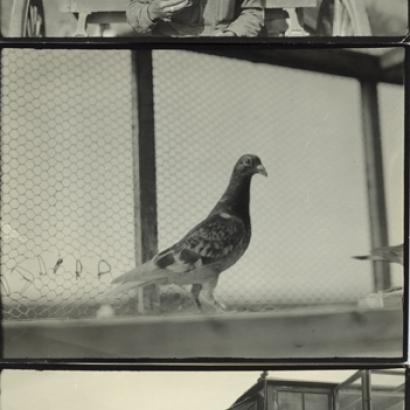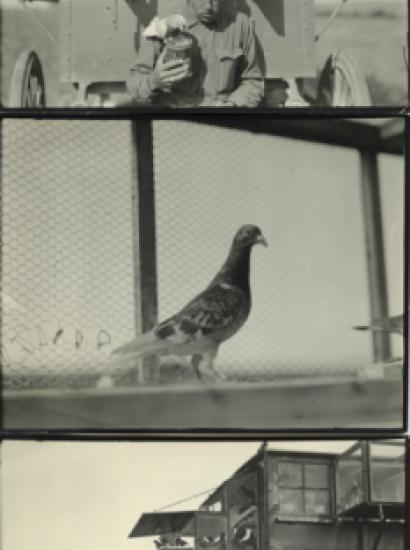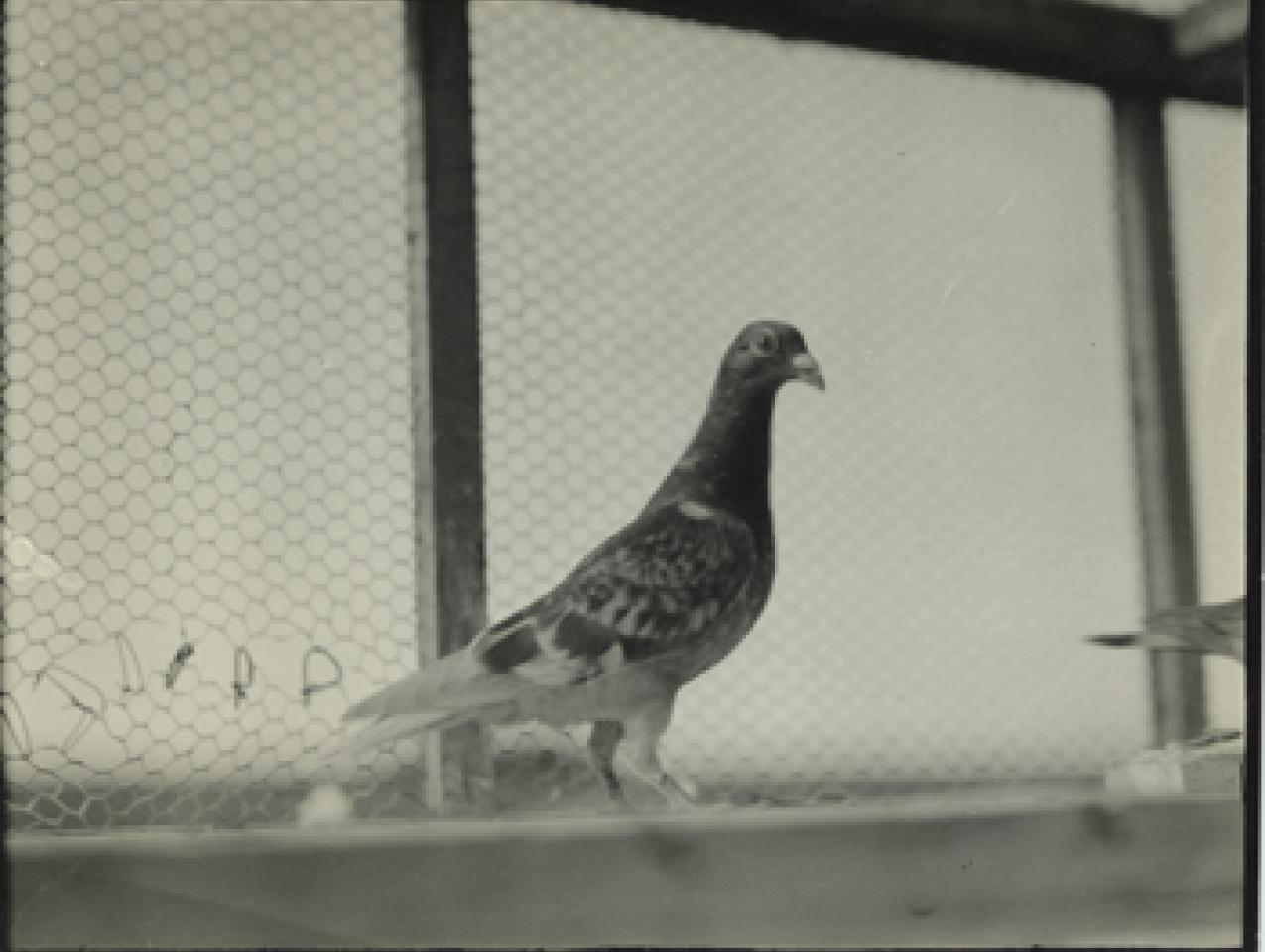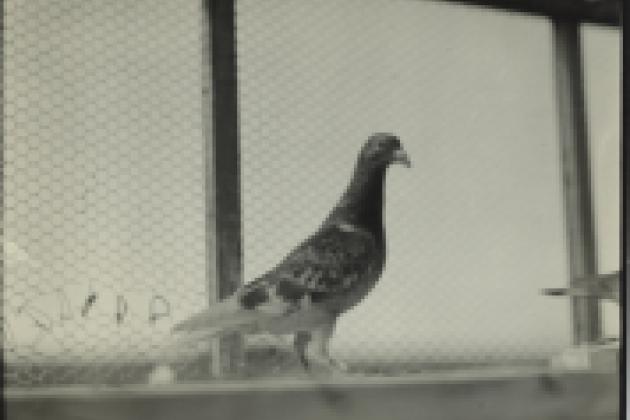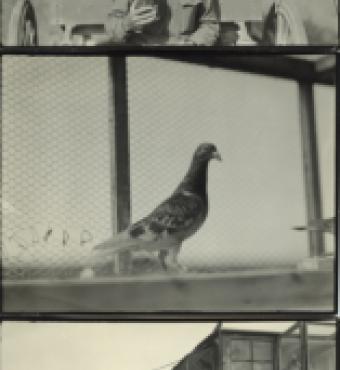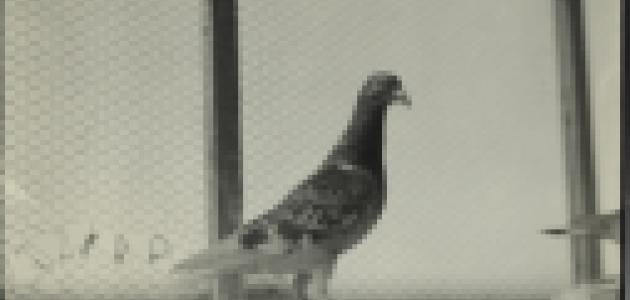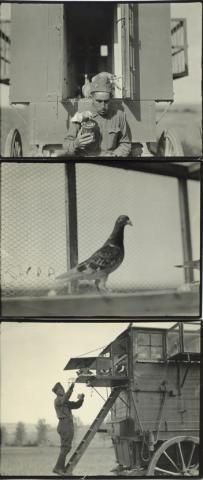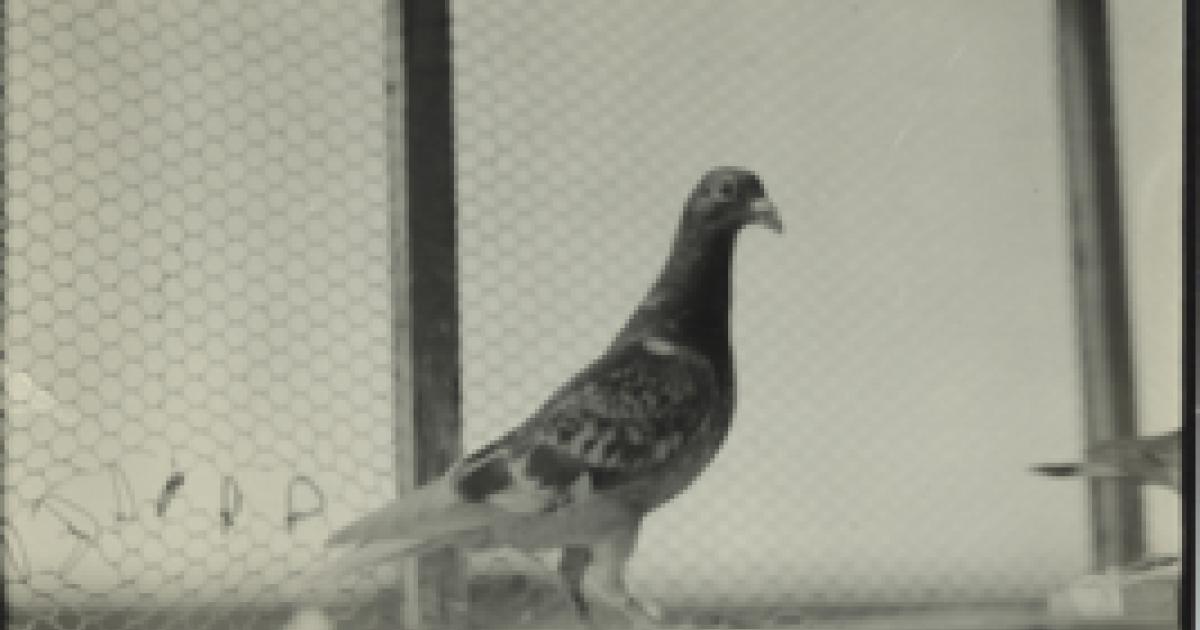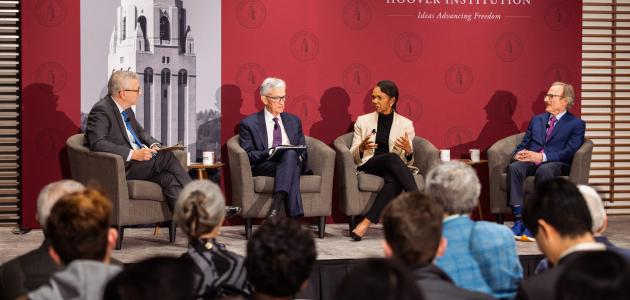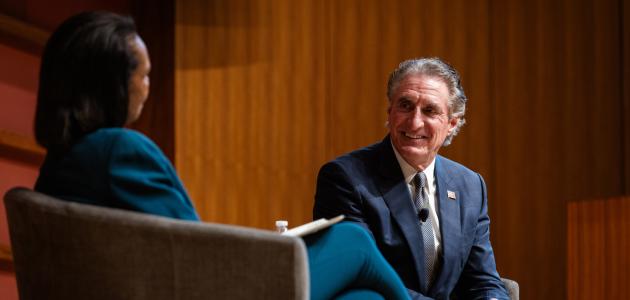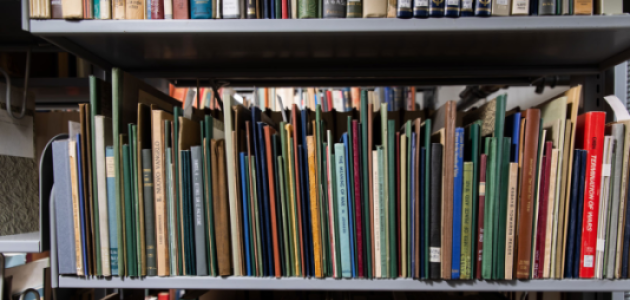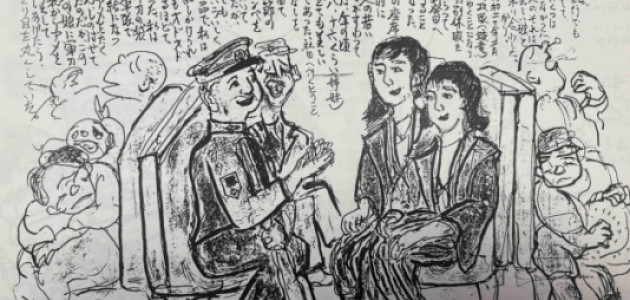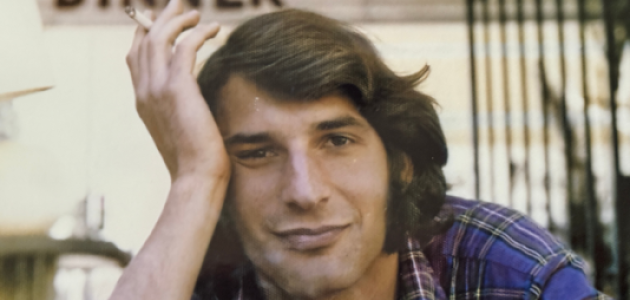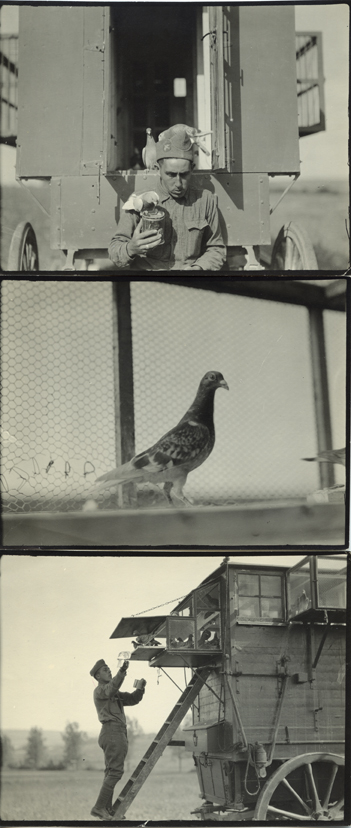
In the world of email, Skype, smart phones, and social media, it is hard to believe that pigeons were once reliable forms of communication. In fact, during World War I, pigeons with as little as five days of training achieved delivery success rates of 95 percent. By engaging the birds' natural homing instincts, the trainers (also known as pigeoneers) would teach the birds to fly from a front line trench, for example, back to their roost, which was typically embedded in a military camp miles away. The encrypted messages were written on rice paper and delivered in a small, lightweight aluminum vial strapped to the pigeon's leg. More difficult than training the pigeons was reassuring military personnel that the messages would be delivered; thus two pigeons carrying identical messages were often sent on the mission.
1982, the remains of a military carrier pigeon were discovered in a chimney in Surrey, England, with a coded message from 1944 attached to the leg bone. Thirty years later, in November 2012, a Canadian researcher analyzed the code and uncovered what he believed to be a message from the Allies about German troop strength in Normandy. Although the message was never delivered, the worldwide attention the story received exemplifies our passion for unlocking history's riddles.
Lucien J. Rode was the official photographer at the Headquarters of General Pershing in France. These photographs from the Lucien J. Rode photograph collection depict military carrier pigeons in training.







